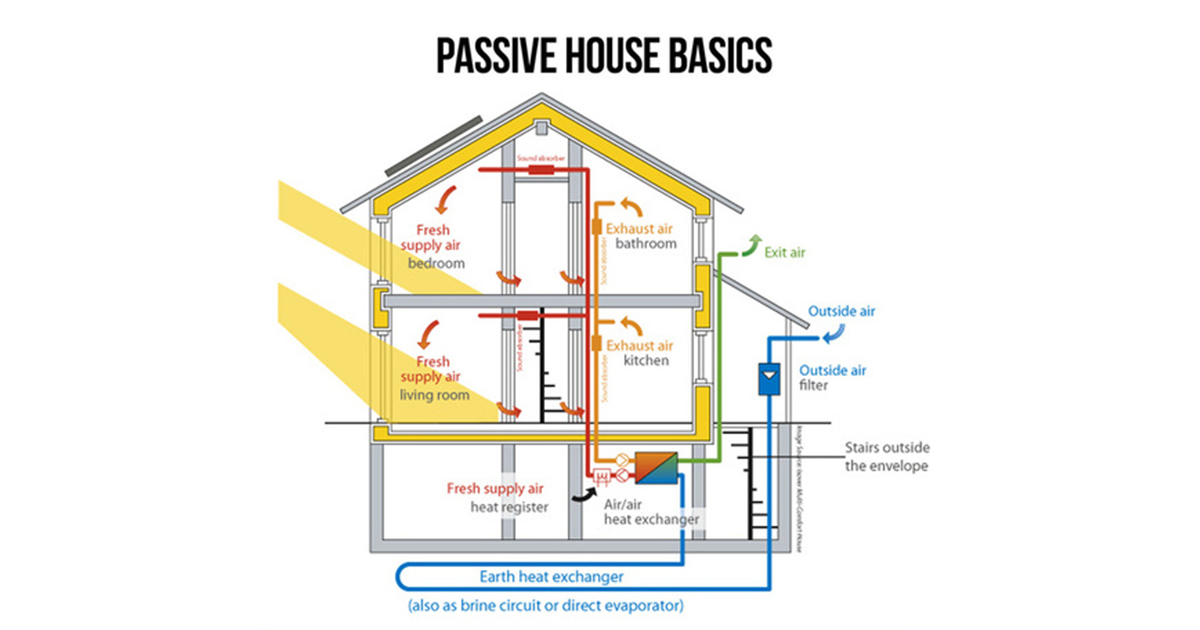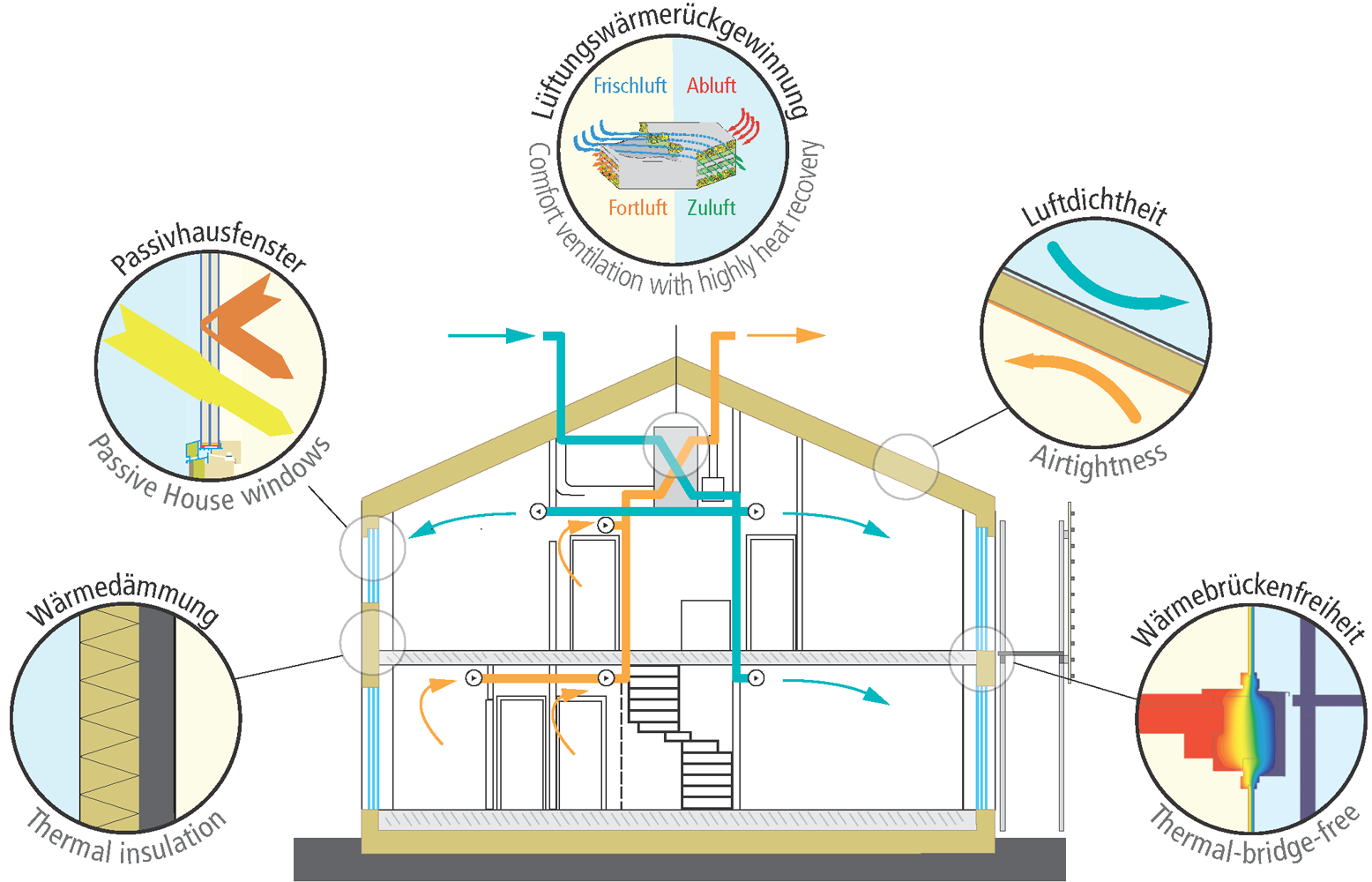Table Of Content

The aim is to have an ‘envelope’ of insulation, that – as far as possible – is unbroken by any interruptions, so the building can hold in as much warmth as possible. This means that the insulation will usually cover the whole exterior of the building, ideally with no breaks from materials in the structure of the building. Lowe consistently recommends smart thermostat controls to her clients and new homeowners alike. “You’ll be able to adjust your temperature settings when you’re away, and some smart thermostats track your energy consumption so you stay on track,” adds Rodriguez. If you’re intrigued by the benefits of passive house living but aren’t so keen on the idea of giving up your existing home to build something completely new … well, that’s understandable. “It’s relatively easy to avoid thermal bridging when designing a new building; it’s harder to mitigate on a retrofit,” says Knezovich.
What is a Passive House or Passivhaus?
Careful shading designs admit sun when you want it but control it when you do not. One company with Utah ties is pioneering major inroads into the manufactured housing industry. Sustainable housing was once a niche concept, but it has moved its address to the front lines of architectural innovation and urban planning. With an increased emphasis on conserving resources, reducing carbon footprints and promoting healthier living environments, sustainable housing trends are influencing the way homes and communities are being built. Before a house can be certified as passive, it must be built or remodeled to meet certain criteria. These requirements include limited energy needed to heat a home and run appliances, airtightness, and regulated temperatures all year round.

Shifting to a more passive real-estate strategy: Private lending
A property that has those things already done provides value to that buyer, and they are typically more interested in proceeding with the home that has those amenities,” he explains. Homes built within the past few years will often have sustainability at the forefront of their planning, and older homes will likely have undergone upgrades and renovations to keep up with buyer preferences. Another undeniable advantage of living in a passive home is the reduced need for ongoing maintenance and eventual upgrades. A small photovoltaic system combined with a storage battery keeps the house electrically self-performing even during a black-out. Passive House LA is a Zero Net Energy (ZNE) home and it turns out after the first year of operation of this all electric building it is producing more energy than it uses being a Plus Energy Home.
Request a Phius 101 Presentation
‘Truly innovative': Boston's Winthrop Center becomes world's largest passive office building - NBC Boston
‘Truly innovative': Boston's Winthrop Center becomes world's largest passive office building.
Posted: Wed, 18 Oct 2023 07:00:00 GMT [source]
In the Northern Hemisphere, windows on the north or west side of the house will be smaller, just enough to reduce or eliminate the need for artificial light in the daytime. On the south side, the windows will be larger to capture the sun's heat in cooler months. In warmer months, adjustable shading elements on south-facing windows prevent the house from overheating. Foundations, walls, floors, doors, windows, and roofs are insulated without gaps between them. In a Passive House, the walls are thicker, often with three or more layers of materials and insulation cavities between them.
Aggressive Energy Savings of Passive House Design
Summer Rylander is a freelance writer and editor with an abundant background in real estate. A former residential real estate agent in the Columbia, SC area and sales administrator at a commercial real estate firm, she now uses this experience to help guide readers. Summer currently resides in Nuremberg, Germany, where she fulfills her passions of food and travel and avoids her dislikes of mayonnaise and being trapped in an office.
It also entails removing thermal bridges throughout the home to avoid cold corners, minimize mold growth, and improve overall comfort. While many people think passive house design originated in Germany, the passive house movement actually began in the United States and Canada in the 1970s following the 1973 oil embargo that hiked up energy prices. This spurred a group of engineers and architects to design a highly insulated house in 1976 that consumed 60 percent less energy than any other building. In 1981, American physicist William Shurcliff was the first to use the term “passive house” in his book The Saunders-Shrewsbury House. However, by then the United States shifted away from energy conservation, and Germany took the reins of the movement.
And whether it be derived from fossil fuels or renewables, the focus has always been on production, production, production. We need zero-energy buildings, but if it’s the goal, it lets us keep making crappy buildings and just producing more (renewable) power to compensate. It’s not unlike our health industry, where we spend enormous sums on treating symptoms because we can’t be bothered to move upstream to the root causes of our poor health. The Passive House concept upends this focus on ever more production, on treating symptoms.
Passive house design
Built not far from Paris, this was the first building in the region to receive certified Passive House status. The bamboo used on the exterior makes it visually striking, while the design is adapted to its environment. The north side is closed off, to minimise heat loss, while the south side has been opened up, to make the most of the sunshine. In the rural surrounds of the Scottish borders, this beautiful example shows that a Passive House doesn’t mean you can’t have plentiful windows and light. As long as they’re good quality, it’s possible to maintain the superinsulation that keeps these homes so stable when it comes to temperature.
Sign up for the next Passive House Designer course
Passive buildings feature a continuous insulating envelope like a warm coat around the building, and an airtight layer. It was developed by Swedish structural engineer Bo Adamson and German physicist Wolfgang Feist initially as a conversation in 1988; the series of research projects that followed led to the principles and recommended performance goals. Adamson and Feist were based in Europe, but their studies began by investigating North American projects of the 1970s that were responding to the oil embargo. One of the seminal projects they looked at was the Saskatchewan Conservation House, which helped pioneer energy-efficient housing and led the way to building standards. Passive building utilizes five core principles to create safe, resilient, comfortable and – most importantly – energy efficient structures, from commercial to residential to multifamily.
As demonstrated in our top Passive House designs above – they most certainly do not! They come in all shapes and sizes, and can be built for both rural and urban environments. That’s not to say it’s not worth thinking about renovating your home to a Passive House design – but it may be more complicated, and difficult to reap quite so many rewards. By contrast, a gas-heated Victorian villa – the same size as the houses above – would use 300 kWh/m2a.
From reclaimed wood and recycled steel to bamboo and hempcrete, green building materials are becoming increasingly popular for their low environmental impact and durability. During the summer, a Passive House needs to have windows that can open, to release any heat that’s built up during the day. In the winter, it’s still possible to open the windows – but depending on the location, the air might feel fresher inside than out, so you may prefer to keep them shut.

No comments:
Post a Comment